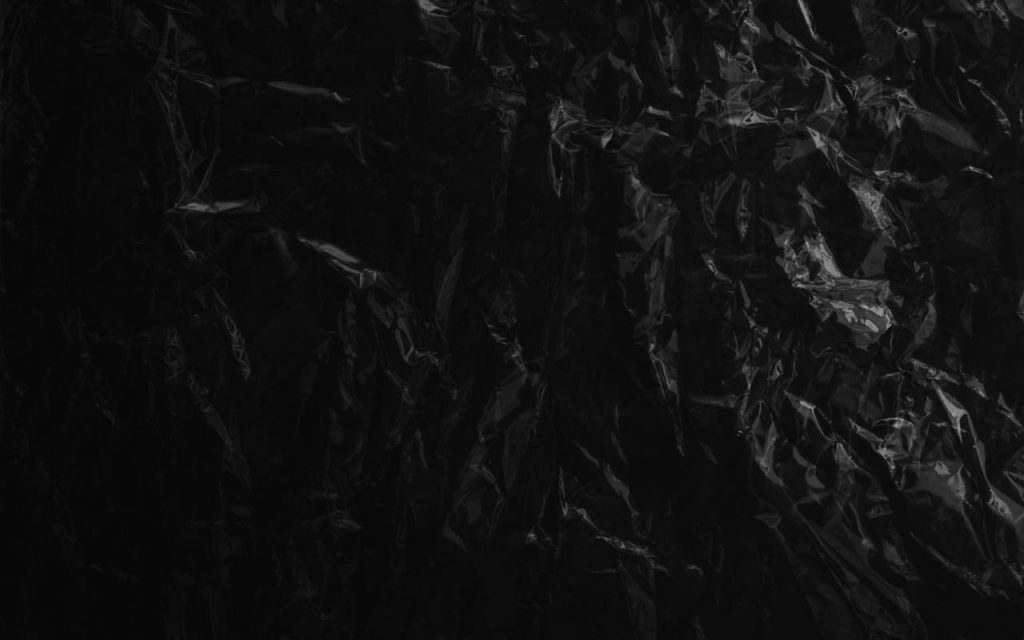We’re all familiar with black polythene – well, those of us who take the bins out every week are, anyway! But not all black polythene sheeting is made equal. You see, the stuff used to make bin bags is usually very thin and not quite as black as can be. This results in quite a lot of light leaking through, giving the material a low opacity.
And while that’s probably fine for your household waste, it’s not as good for industrial uses that demand higher opacity. For example, black polythene for concrete curing needs to be highly opaque in order to correctly control temperature and light passthrough.
There are tons more uses for highly opaque black polythene – from construction and farming, to hazardous waste disposal and light-sensitive packaging, or even just using it for the way it looks. But this seemingly simple feat of making a clear substance totally opaque is, in fact, rather tricky to get right.
Highly opaque black polythene sheeting is specifically chosen for its uniformity, light blocking abilities, and the general advantages that polythene brings. So, how is it made so dark? It all starts at the beginning of the polythene manufacturing process. And as a UK polythene manufacturer, we’re well-versed in the creation of custom black polythene!

How is black polythene sheeting made?
Let’s tell you all about the manufacturing process of polythene film, and how it is made opaque black.
All polythene film, whether black, clear or coloured, begins life as tiny pellets. These pellets are formed from ethylene gas which has been subjected to extreme heat and pressure. When catalysts are added, the gas molecules stop floating around freely and bond to each other in long chains. This long chained polymer is the plastic we call polythene (or polyethylene).
Learn more: How is Polythene Made?
To make the polythene black, additives are required. Raw, virgin polythene is naturally almost clear, with better transparency at thinner gauges (and we’ll get back to this important point later!).
Before the extrusion process begins, colour masterbatches are added to the polythene to give the right colour and opacity. For high-opacity black polythene, a high concentration of carbon black – a fine powder derived from soot – is introduced into the mix. This black pigment absorbs light extremely well, and costs little (it is soot, after all.). Then, it’s time for extrusion, using some highly specialised machinery.
Not to make it sound too rudimentary, but picture a giant pasta maker crossed with a hairdryer, and you’re close! Except, instead of pasta dough, it’s pushing out molten polythene into a tube shape. This molten polymer tube is blown with warm air into a huge vertical “bubble” – before being flattened into lay flat tubing (LFT) through a series of rollers. Once cooled, it can be cut into sheeting, formed into bags, folded into CFS or multifold sheets – or simply left as jet-black LFT.
The importance of thickness in polythene opacity
Right – we said we’d come to it, and here we are. Let’s talk about the role thickness plays in polythene opacity.
Taking the black bin bag example, when held up to even the dimmest of lights, the light pierces the thin polythene quite easily. It’s no secret that thicker material has a higher opacity compared to lower gauges, can a thin black polythene sheet ever achieve the same level of opacity?
While thinner sheets can indeed be made opaque with higher concentrations of carbon black, they’re simply physically unable to offer the same level of durability and light-blocking capabilities as thicker sheets. But a compromise can be met, by using MDPE instead of LDPE sheeting.
MDPE has a higher density, which means more weight at the same thickness as LDPE. But on the flipside, this also means less material is needed for the same strength. The higher density also absorbs more light, making the opacity more effective at lower gauges.
So, when are light and heavy duties needed in black polythene sheeting?
The advantages and disadvantages of thick black polythene sheeting
Thick black polythene sheeting has many advantages, specifically its superior opacity. This makes it ideal for light-blocking applications like agricultural and construction use. Thicker sheets also offer increased strength and puncture resistance, making them suitable for demanding environments or packaging bulky, light-sensitive materials.
Learn more: All the uses for black polythene
Unsurprisingly, thick black polythene sheeting tends to be heavier and bulkier the higher the thickness, requiring more storage space and labour for handling. It’s still flexible, but not as flexible as lower gauges – and for many smaller packaging solutions, will be total overkill.
Choosing the right duty of black polythene is an important step in getting your needs met.
Thinner polythene sheeting is suitable for temporary applications, as well as many smaller packaging solutions. On the other hand, heavy duty black polythene sheeting shines in long-term projects – like landscaping, pond lining, agriculture, construction and engineering.
Thick black polythene for professional applications
Order high-opacity black polythene sheeting, with custom blends and additives. Create your ideal protective packaging, or facilitate temperature control in construction and agricultural uses. Get a quote now or call us on 01773 820415 to start your order.


